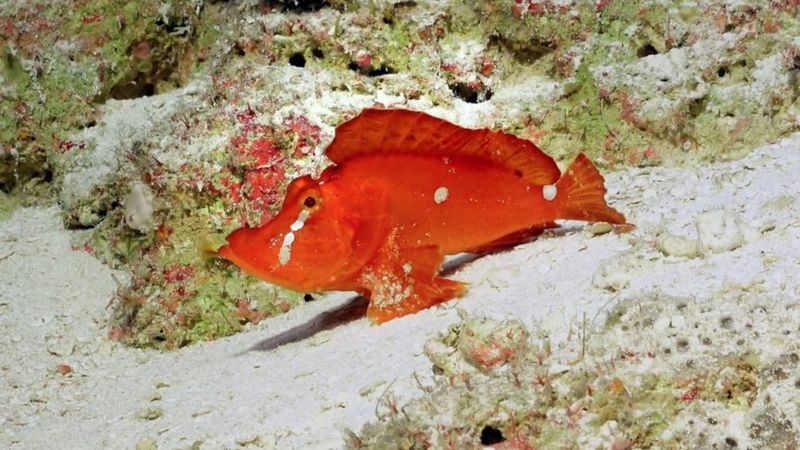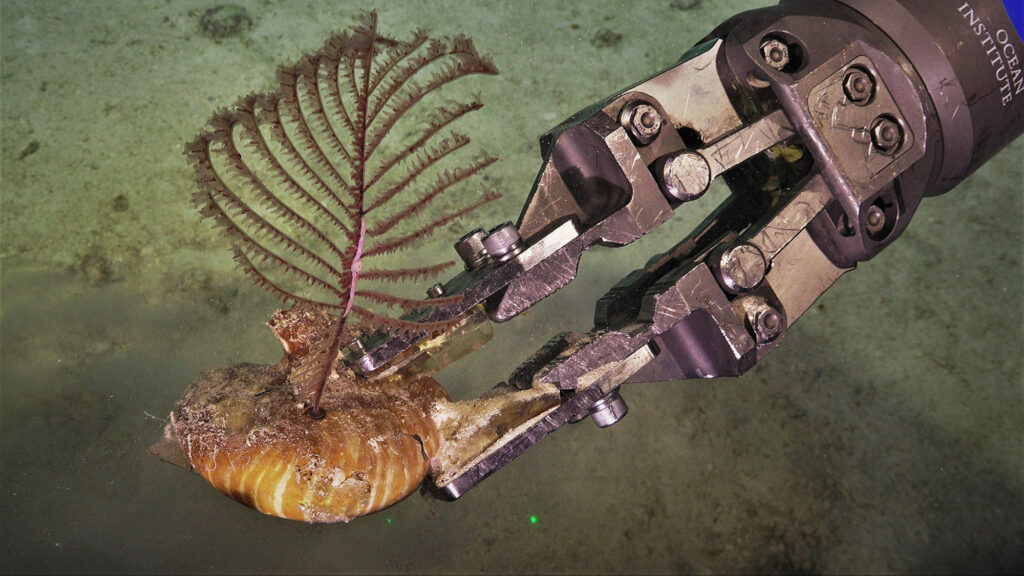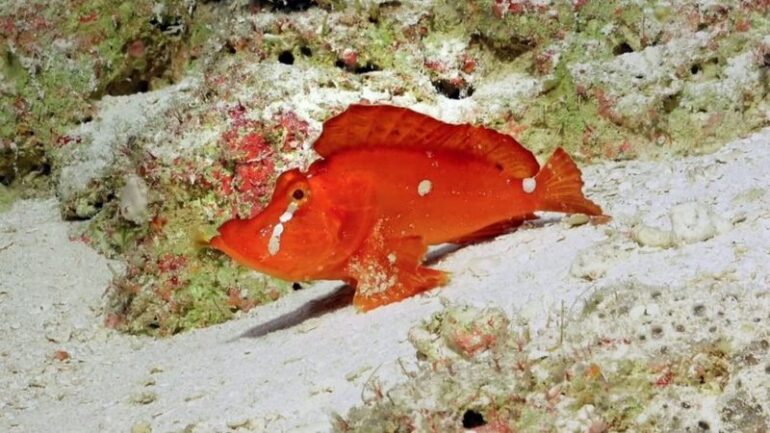For the very first time, scientists have been able to view the deepest regions of the Great Barrier Reef Marine Park. The team from the Schmidt Ocean Institute discovered five undescribed species consisting of black corals and sponges, and recorded Australia’s first observation of an extremely rare Rhinopias.
Using a remotely operated underwater robot to view high-resolution video of the bottom of the ocean floor, some 1,820 meters deep, the science team examined deep-sea bathymetry, wildlife, and ecosystems.
“This included the most comprehensive midwater robotic dive survey series to ever have been conducted in the South Pacific,” said Dr. Brendan Brooke, the expedition’s lead scientist from Geoscience Australia. “Research vessel Falkor has integrated a range of technologies that have allowed us to work across the full range of ocean depths in the Coral Sea and to provide data for multiple disciplines including geology, biology, and oceanography.”
“This expedition has provided us with a unique window into both the geological past and the present day conditions, allowing scientists and park managers to be able to see and tell the full story of the interconnected environments,” said Dr. Beaman. “This vision is invaluable for science, management, and education.”
One of the most exciting discoveries was spotting a Rhinopias agriloba. This unique scorpionfish is normally found in waters around Hawaii, in the central Pacific, and this is the first time any have been seen this far from home.
Robin Beaman from James Cook University in Australia said the team were really surprised by what they discovered. “It was very strange — it had this beautiful red colour and it walked on its pectoral fins like a set of hands,” he said.

He added: “Thankfully we had what I call the ‘Fish Army’ – this group of ichthyologists (marine biologist who studies various species of fish classified as bony, cartilaginous, or jawless), fish experts – watching the live feed who could say, ‘That has never been seen in Australia — the closest we know of is in Hawaii.'”
The team have also discovered new species of black corals with metre-long tentacles, as well as new types of sponge.

Unlike shallow coral water species that rely on sunlight to create food, deepwater corals rely on ocean currents for food and take extremely long to grow. Deep water corals provide important habitat for marine life, and researches on this expedition are helping bring awareness and document the diversity of live in the deep sea.
In addition, the team collected the deepest samples ever of soft coral and scleractinian coral in the Coral Sea. They also collected the first sample of ancient bedrock beneath the Great Barrier Reef, estimated to be between 40 and 50 million years old.
It is hoped some of the samples that will help them better understand the underwater habitat and how features of the seabed work alongside the animals living there. [Schmidt Institute]




